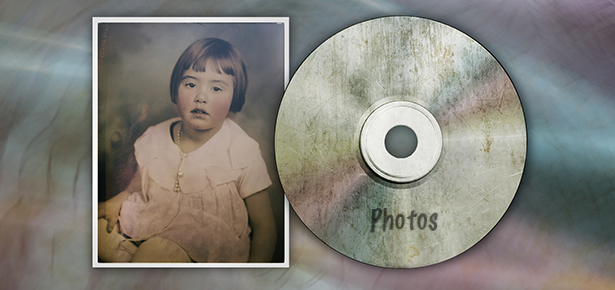
When I was clearing out the closets during my man cave setup this past summer, I came across a box of old computer CDs. One of them contained photographs. When I inserted the disk into my desktop computer to take a look, something went terribly wrong. The disk icon did not appear on the screen, the CD drive buzzed on and off, the computer began freezing unpredictably, and all my attempts to eject the disk failed. After going to my laptop to search online for solutions, I resorted to such desperate strategies as holding a pair of pliers poised to grab the disk at those split-second moments when its edge briefly poked out from the slot, and even turning the whole computer sideways with the drive pointed down so gravity might provide some assistance.
Finally, I resigned myself to defeat. I would have to turn off, disconnect, and haul the computer to the nearest repair shop. It was at that moment, perhaps as a compassionate gesture of recognition for my surrender to miscreant technology, the disk popped out all by itself.
The digital zeitgeist surrounds us with the illusion of permanency
I don’t know for sure if it’s the CD or the drive that’s defective, but it actually doesn’t matter all that much. I’d like to see those photos but I can live without them. I can even live without the drive because in the Age of the Cloud we all realize we don’t need that type of media any more. We all realize and accept the fact that everything keeps changing in this digital world of ours. Here today, gone tomorrow.
And yet, paradoxically, the digital zeitgeist surrounds us with the illusion of permanency. We see people scrambling to digitize as many of their old photographs as possible because they believe that’s the best way to preserve those images for future generations. We hear that when you delete a file it isn’t really gone. We hear how once you put something online, it’s going to be there forever whether you like it or not. We hear claims that everything on the Internet, which is a huge chunk of humanity growing larger every second, will be preserved for all time – or at least as long as the Internet exists, which is probably forever assuming civilization does not collapse. Even in my book Psychology of the Digital Age: Humans Become Electric I talk about the unique advantages of the “recordability” and “preservability” of things that happens in cyberspace.
My experience with the CD tells me otherwise. I’m certainly not going to risk putting that disk into any computer, so the images tucked away in it are, in my mind, forever lost. This isn’t the first time digital impermanency has slapped me in the face. Twenty-five years ago I wrote a book about contemporary psychoanalysis and eastern thought on one of the early IBM personal computers. Even though I tried very hard over the decades to carefully transfer those files to the new emerging media – from floppy-covered floppy disks, to hard-covered floppy disks, to CDs, to external drives, to the cloud – I now cannot locate all the chapters in my archives. About the same time I wrote that book, when my daughters were very young, they made audio recordings of themselves singing and making jokes. To my wife and me these sound files are precious, but they are in an old proprietary format that cannot be read or translated by any software I have found, and I’ve searched extensively.
Don’t expect some expert in the future will write the code to translate antiquated formats into new ones. Don’t hold your breath hoping your descendants will carefully save the digital family heirlooms and transfer them to the new media. The sound, text, photo, and video files we create now may not survive ten, twenty, or a hundred years into the future. Files will be misplaced, no longer translatable, vanquished by a finger that accidentally taps the delete key, or buried so deep in the massive archives of cyberspace that no search robot can find them.
Rather than based on fact, the modern idealization of digital permanency reveals our ancient human fear of death and the wish for immortality. We hope that in cyberspace we, or at least something about our identities, might last forever. In their book Infinite Reality: The Hidden Blueprint of Our Virtual Lives, Blascovich and Bailenson described a study in which subjects became outraged when they learned the researchers could not actually preserve their digitized identities for centuries as the researchers originally suggested. Who can blame those subjects when some technology experts like Ray Kurzweil and William Sims Bainbridge claim that computers will indeed be able to capture and store a human personality?
Being a psychologist for many years, I have come to appreciate the mysteriously elusive complexity of the human psyche. So how can we recreate something we do not understand? It is a rather grandiose endeavor. As my experience with the CD reminded me, simply preserving tidbits of our lives can be a daunting challenge.
Only time will tell us how well computers will help us transcend time. In the meanwhile, PRINT your precious photos. Passed down to future generations in a shoebox, they stand a much better chance of surviving, in a very tangible hands-on manner – with their faded, dusty, and scratched surfaces enriching our appreciation of times past, while also reminding us about the impermanency of all things.
Latest Comments
Have your say!